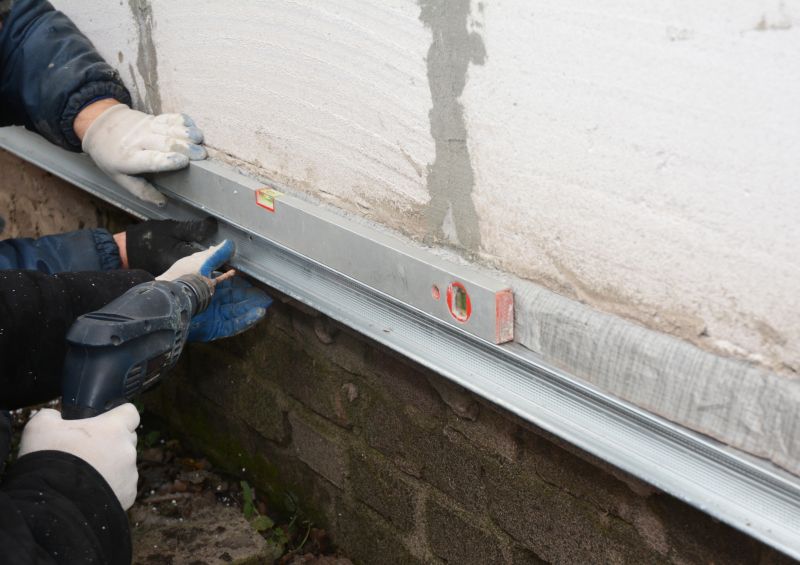The Ultimate Collection Of Foundation Repair Products For Homeowners
A comprehensive guide to essential products that help you maintain and repair your home's foundation effectively.
 Foundation repairs are a critical aspect of maintaining the structural integrity of a building, especially in regions like Columbia, MO, where soil conditions and weather patterns can impact the stability of structures. Selecting appropriate products for foundation repair requires understanding the various options available, each designed to address different issues such as settling, cracking, or shifting. From underpinning solutions to stabilization materials, the right products can help restore safety and stability to affected properties.
Foundation repairs are a critical aspect of maintaining the structural integrity of a building, especially in regions like Columbia, MO, where soil conditions and weather patterns can impact the stability of structures. Selecting appropriate products for foundation repair requires understanding the various options available, each designed to address different issues such as settling, cracking, or shifting. From underpinning solutions to stabilization materials, the right products can help restore safety and stability to affected properties.
Top Overall Option
Heavy-Duty Pier and Underpinning System
A versatile and robust solution designed to stabilize and lift sinking or settling foundations. These systems typically include adjustable steel piers and supports that can be customized to fit various foundation types. They are suitable for addressing significant shifts and can be installed with minimal disruption. The durability and adaptability of these systems make them a reliable choice for long-term foundation stability.
Types of Products For Foundation Repairs
Helical Piers
Helical piers are screw-in supports used to stabilize and lift foundations by anchoring into stable soil layers beneath the structure.
Push Piers
Push piers are driven into the ground beneath the foundation to provide support and prevent further settling or shifting.
Epoxy Injection Kits
Epoxy injections are used to seal cracks and restore the integrity of concrete foundations.
Polyurethane Foam
Polyurethane foam is injected into cracks or voids to stabilize soil and fill gaps, helping to lift and support the foundation.
Steel Support Beams
Steel beams are used to reinforce and stabilize existing foundation walls or floors.
Concrete Patching Materials
These materials are designed to repair surface cracks and surface-level damage to foundations.
Soil Stabilization Products
Products that improve soil compaction and stability around the foundation to prevent future shifting.
Foundation Bolts and Anchors
Used to secure and reinforce foundation walls and structures.
Grout and Mortar Mixes
Specialized mixes for filling voids, sealing cracks, and reinforcing foundation materials.
Underpinning Plates and Brackets
Components used in underpinning systems to provide additional support to load-bearing structures.
Drainage and Waterproofing Products
Materials designed to manage water flow and prevent moisture intrusion that can weaken foundations.
Vibration and Jacking Equipment
Tools used during foundation lifting or stabilization procedures.
Popular Choices
Often selected for their ease of installation and ability to support various foundation types.
Commonly used for their capacity to lift and stabilize sinking foundations.
Widely used for crack repair and structural reinforcement.
Favored for quick injections to fill voids and stabilize soil.
Popular for reinforcing foundation walls and floors.
Frequently used for surface repairs and minor crack sealing.
Chosen for their ability to improve soil conditions around foundations.
Commonly installed to reinforce and secure foundation components.
Essential for managing water flow and reducing foundation moisture issues.
Applied to prevent water intrusion and protect the foundation from moisture damage.
Selected for their role in supporting and strengthening load-bearing structures.
Popular tools for foundation lifting and stabilization procedures.
When considering foundation repair products, it's essential to evaluate the specific needs of the structure, including the extent of damage and the underlying soil conditions. Products like helical piers and push piers can provide support and lift for sinking foundations, while epoxy injections and polyurethane foam can seal cracks and prevent further deterioration. Proper installation and compatibility with existing foundation materials are crucial to ensure long-term effectiveness.
In Columbia, MO, homeowners and contractors often prioritize products that offer durability and ease of use, especially in challenging soil environments. It's advisable to consult with foundation specialists to determine the most suitable options for each situation. Investing in quality products can help mitigate future issues, reduce repair costs, and extend the lifespan of the building's foundation.
Key Buying Considerations
- Assess the extent and type of foundation damage to determine suitable repair products.
- Understand the soil conditions and how they may influence product selection and installation methods.
- Verify compatibility of repair products with existing foundation materials such as concrete or masonry.
- Consider the load-bearing requirements and whether adjustable or fixed supports are needed.
- Evaluate the ease of installation and whether professional assistance is recommended.
- Check for product durability and resistance to environmental factors like moisture and temperature changes.
- Determine if the products can be customized or adjusted to fit specific foundation dimensions.
- Review manufacturer specifications for weight capacity and safety standards.
- Assess the potential impact on property value and future maintenance needs.
- Ensure that the selected products comply with local building codes and regulations.
- Look into warranty options and the availability of technical support from suppliers.
- Consider the long-term performance and whether ongoing maintenance is required.
- Evaluate the cost-effectiveness of different products relative to the scope of repairs.
- Research customer reviews and case studies for insights into product performance.
- Plan for potential site-specific challenges such as limited access or underground utilities.
